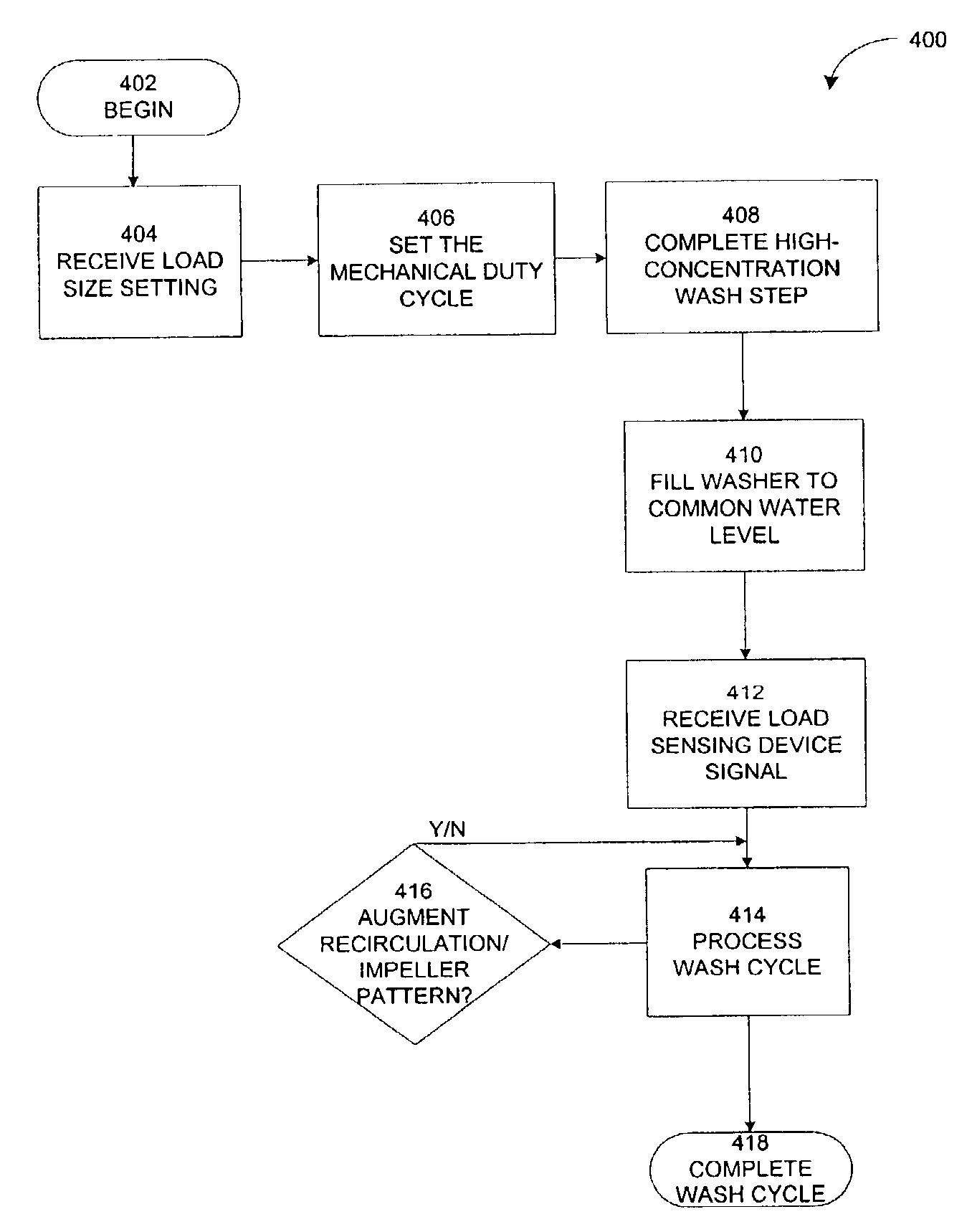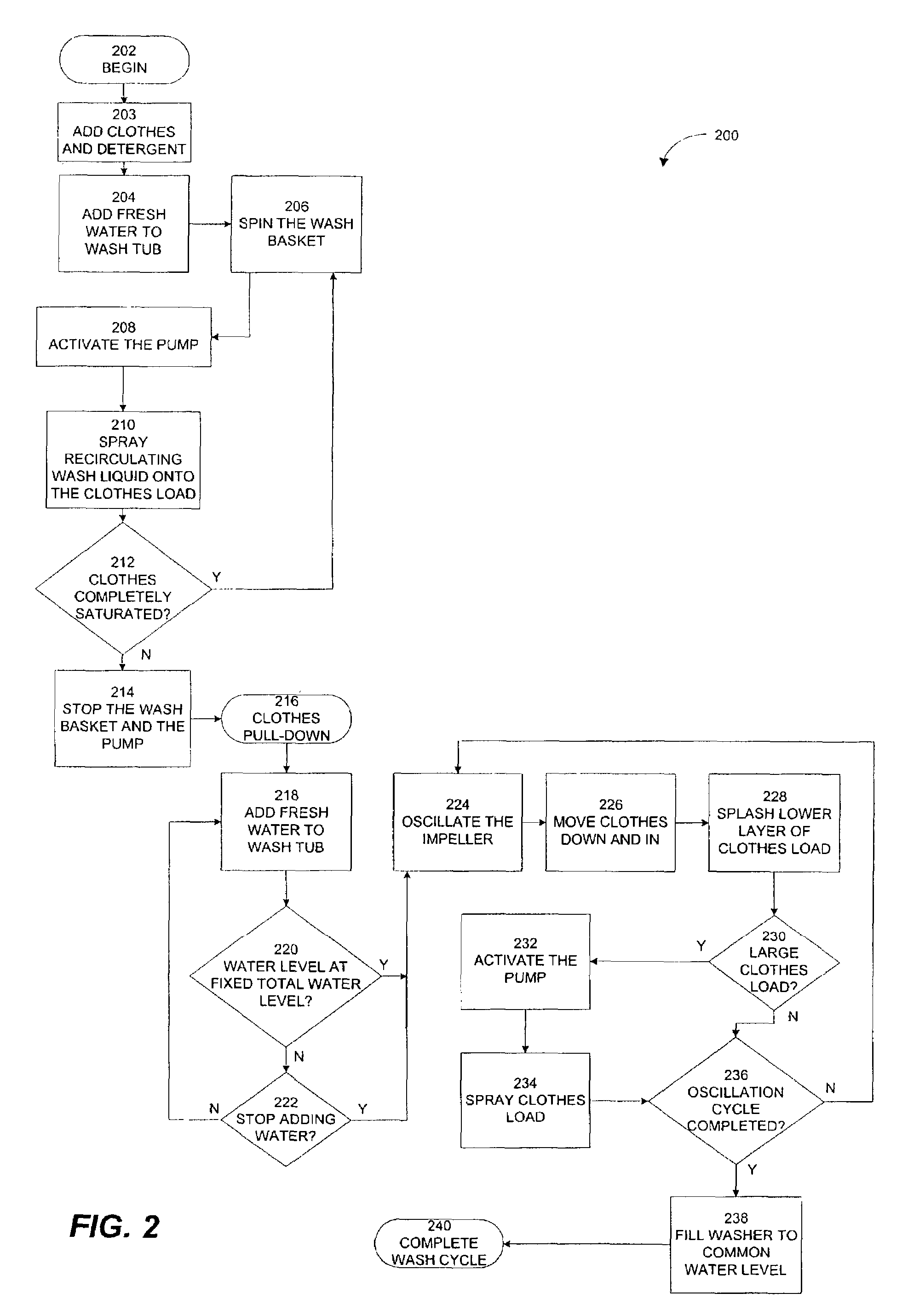Method for washing varying clothes loads in automatic washer using common water level
a technology of automatic washing and water level, applied in the field of washing machines, can solve the problems of increasing consumer detergent costs, over-suds and over-torque, and increasing detergent concentration by lowering the volume of fresh water used
- Summary
- Abstract
- Description
- Claims
- Application Information
AI Technical Summary
Benefits of technology
Problems solved by technology
Method used
Image
Examples
Embodiment Construction
[0023]Vertical-axis washers include a wash basket that spins about a vertical-axis. Horizontal-axis washers include a wash basket that spins about a horizontal-axis. Other washer constructions have an axis tilted between vertical and horizontal.
[0024]The present invention is particularly useful for a vertical-axis washer of the type disclosed in FIG. 1 and thus the preferred embodiment will be disclosed in this environment, although the invention is not so limited. In fact, the present invention may be utilized in other types of washers such as horizontal-axis or tilted-axis, as well as any other fluid-employing appliance that is motor driven.
[0025]A particular type of vertical-axis washer is disclosed in U.S. Pat. No. 6,212,722, a patent that is owned by the assignee of this patent and the disclosure of which is hereby incorporated by reference to the extent permitted by law. The type of machine disclosed therein may be referred to as a VARI machine. A VARI machine may be thought o...
PUM
 Login to View More
Login to View More Abstract
Description
Claims
Application Information
 Login to View More
Login to View More - R&D
- Intellectual Property
- Life Sciences
- Materials
- Tech Scout
- Unparalleled Data Quality
- Higher Quality Content
- 60% Fewer Hallucinations
Browse by: Latest US Patents, China's latest patents, Technical Efficacy Thesaurus, Application Domain, Technology Topic, Popular Technical Reports.
© 2025 PatSnap. All rights reserved.Legal|Privacy policy|Modern Slavery Act Transparency Statement|Sitemap|About US| Contact US: help@patsnap.com



